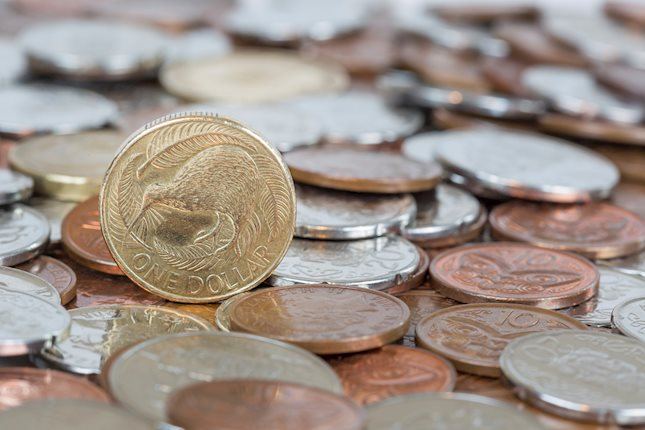Gold price uptrend remains uninterrupted, fresh record high and counting ahead of US data
- Gold price continues scaling new all-time peaks amid US election jitters, Middle East woes.
- The momentum seems unaffected by elevated US Treasury bond yields and a bullish USD.
- Traders now look forward to important US macro data before positioning for further gains.
Gold price (XAU/USD) continues scaling higher heading into the European session on Wednesday and climbs to a fresh all-time high, beyond the $2,785 level in the last hour. Against the backdrop of persistent geopolitical risks stemming from the ongoing conflicts in the Middle East, the uncertainty surrounding the US presidential election turns out to be a key factor benefiting the safe-haven precious metal.
Meanwhile, retreating US Treasury bond yields keep the US Dollar (USD) bulls on the defensive below a three-month high set on Tuesday and offer additional support to the non-yielding Gold price. The momentum seems unaffected by the prevalent risk-on environment and firming expectations for a less aggressive policy easing by the Federal Reserve (Fed), which tends to undermine demand for the XAU/USD.
That said, slightly overbought conditions on the daily chart might hold back bullish traders from placing fresh bets around the Gold price. Nevertheless, the aforementioned fundamental backdrop, along with the lack of any selling, suggests that the path of least resistance for the commodity remains to the upside. Investors now look forward to important US macro releases for some meaningful opportunities.
Daily Digest Market Movers: Gold price bulls retain control amid US political jitters, Middle East tensions
- Republican former US President Donald Trump and Democratic Vice President Kamala Harris are caught in a tight race for the White House, fueling political uncertainty and pushing the Gold price to a fresh record high on Wednesday.
- An Israeli strike on a residential building in northern Gaza killed nearly 100 people on Tuesday. This comes days after the Israeli military confirmed on Sunday that the air force had conducted a precise strike targeting Hamas fighters.
- The development raises the risk of a further escalation of tensions in the Middle East and contributes to the bid tone surrounding the safe-haven XAU/USD, offsetting the recent surge in the US Treasury bond yields and the US Dollar.
- The incoming US macro data suggested that the US economy remains on a strong footing, reaffirming market expectations for a less aggressive policy easing by the Federal Reserve and the prospects for smaller interest rate cuts.
- The Conference Board reported on Tuesday the US Consumer Confidence Index registered its largest single-month gain since March 2021 and rose to a nine-month high of 108.7 in October, from September's upwardly revised 99.2.
- This reflected optimism in business conditions and the job market, overshadowing the disappointing Job Openings and Labor Turnover Survey, or JOLTS report, which showed that vacancies fell to more than a 3-1/2-year low in September.
- Apart from this, deficit-spending concerns after the November 5 US presidential election keep the US bond yields elevated near a multi-month top, which, however, do little to hinder the precious metal's follow-through positive move.
- Traders now look to Wednesday's US economic docket, featuring the release of the ADP report on private-sector employment and the Advance GDP print, which is expected to show that the economy grew by a 3% annualized pace in Q3.
- The market attention will then shift to the US Personal Consumption Expenditure (PCE) Price Index – the Fed's preferred inflation gauge – on Thursday and the closely-watched US Nonfarm Payrolls (NFP) report on Friday.
Technical Outlook: Gold price could prolong its appreciating move once the ascending trend-line hurdle is broken decisively
From a technical perspective, the overnight breakout above a one-week-old trading range was seen as a fresh trigger for bulls. The subsequent move up lifts the Gold price to an ascending trend-line resistance extending from early July, currently pegged near the $2,780-2,785 region, which could now act as a strong barrier amid a slightly overbought Relative Strength Index (RSI) on the daily chart. A sustained strength beyond the said barrier, however, could lift the XAU/USD further towards the $2,800 mark.
On the flip side, any meaningful corrective slide now seems to find decent support near the trading range hurdle breakpoint, around the $2,750 region. Some follow-through selling could make the Gold price vulnerable to extend the fall further towards the $2,732-2,730 intermediate support en route to the $2,715 area. This is followed by the $2,700 mark, which if broken should pave the way for a decline towards the next relevant support near the $2,675 zone en route to the $2,657-2,655 region.
Risk sentiment FAQs
In the world of financial jargon the two widely used terms “risk-on” and “risk off'' refer to the level of risk that investors are willing to stomach during the period referenced. In a “risk-on” market, investors are optimistic about the future and more willing to buy risky assets. In a “risk-off” market investors start to ‘play it safe’ because they are worried about the future, and therefore buy less risky assets that are more certain of bringing a return, even if it is relatively modest.
Typically, during periods of “risk-on”, stock markets will rise, most commodities – except Gold – will also gain in value, since they benefit from a positive growth outlook. The currencies of nations that are heavy commodity exporters strengthen because of increased demand, and Cryptocurrencies rise. In a “risk-off” market, Bonds go up – especially major government Bonds – Gold shines, and safe-haven currencies such as the Japanese Yen, Swiss Franc and US Dollar all benefit.
The Australian Dollar (AUD), the Canadian Dollar (CAD), the New Zealand Dollar (NZD) and minor FX like the Ruble (RUB) and the South African Rand (ZAR), all tend to rise in markets that are “risk-on”. This is because the economies of these currencies are heavily reliant on commodity exports for growth, and commodities tend to rise in price during risk-on periods. This is because investors foresee greater demand for raw materials in the future due to heightened economic activity.
The major currencies that tend to rise during periods of “risk-off” are the US Dollar (USD), the Japanese Yen (JPY) and the Swiss Franc (CHF). The US Dollar, because it is the world’s reserve currency, and because in times of crisis investors buy US government debt, which is seen as safe because the largest economy in the world is unlikely to default. The Yen, from increased demand for Japanese government bonds, because a high proportion are held by domestic investors who are unlikely to dump them – even in a crisis. The Swiss Franc, because strict Swiss banking laws offer investors enhanced capital protection.
Forex News
Keep up with the financial markets, know what's happening and what is affecting the markets with our latest market updates. Analyze market movers, trends and build your trading strategies accordingly.






















